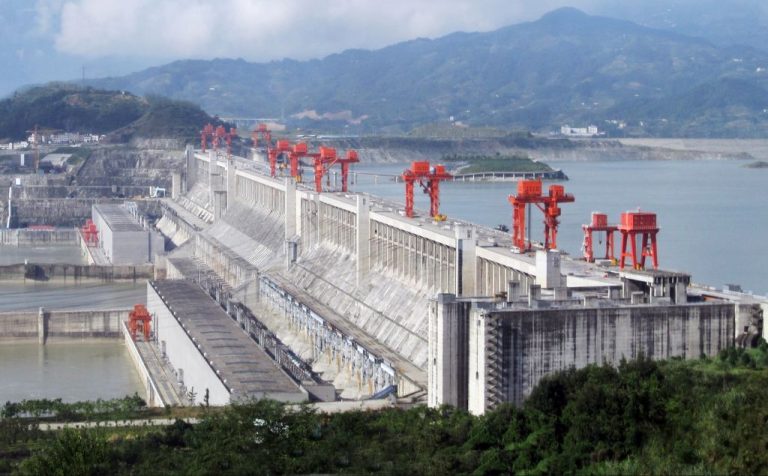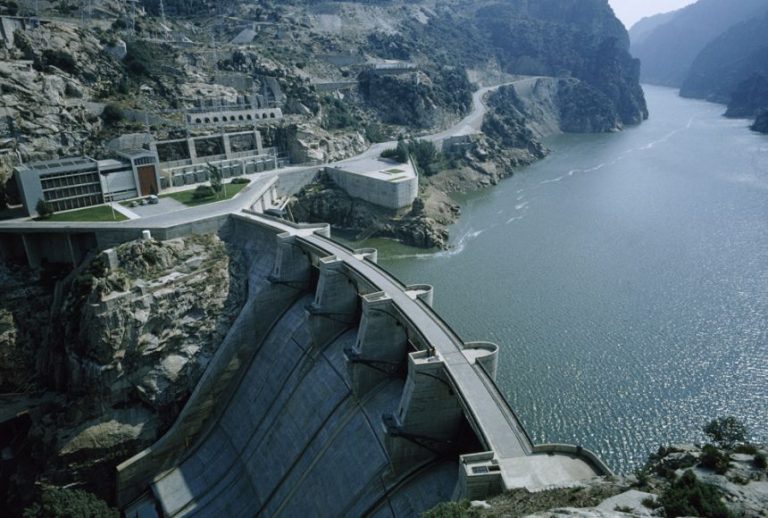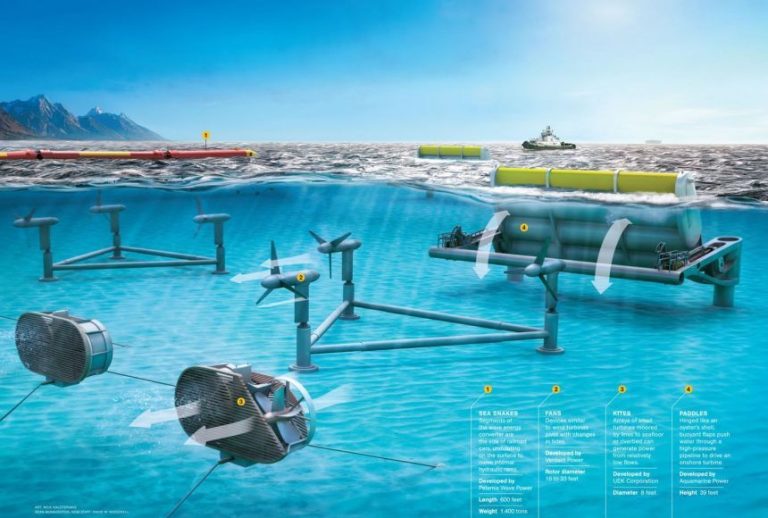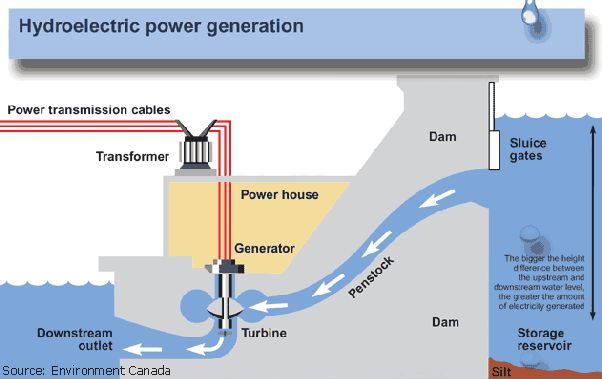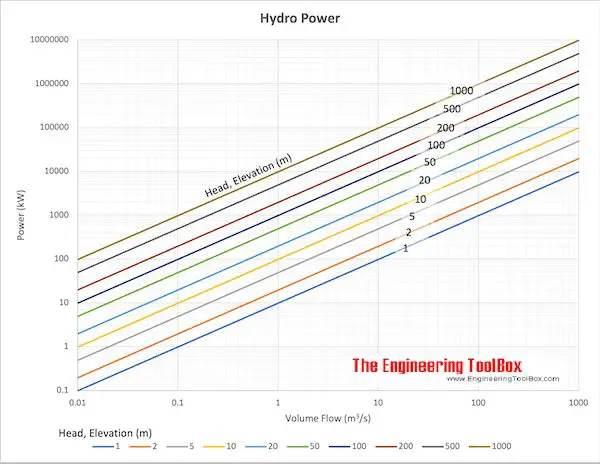Is Canada The Largest Producer Of Hydroelectricity?
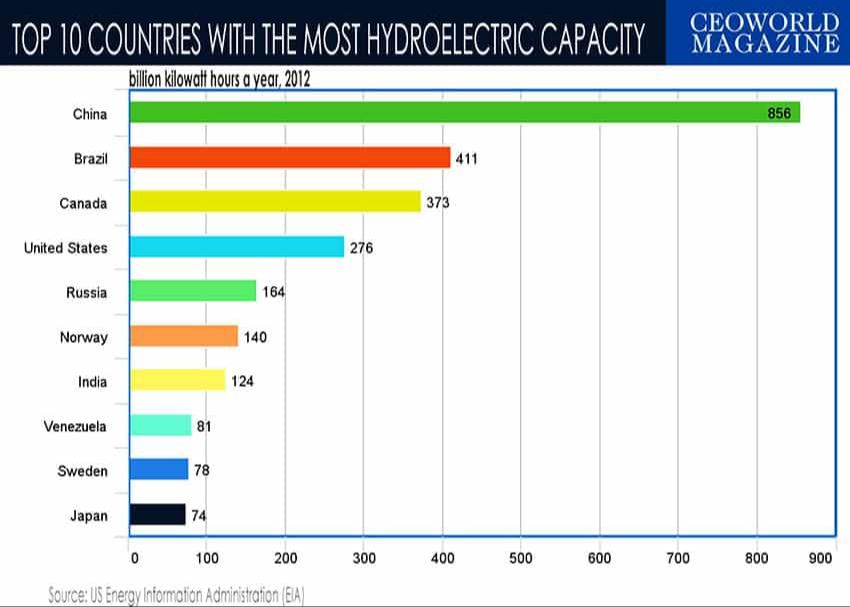
Hydroelectric power is generated by using flowing water to turn turbines connected to generators. The potential energy of water flowing downhill is converted into electricity, making hydroelectricity a renewable and clean energy source (source). Canada has abundant hydroelectric resources and is one of the largest producers of hydroelectricity in the world. This makes hydroelectricity an important part of Canada’s renewable energy portfolio and economy. In this article, we will examine Canada’s hydroelectricity generating capacity, major facilities, and global ranking to understand its significance as a major hydroelectricity producer.
What is Hydroelectric Power?
Hydroelectric power is a form of renewable energy that harnesses the power of flowing water to generate electricity. It relies on the water cycle, where water evaporates, forms clouds, precipitates, and flows back down to the ocean, to provide a constant supply of energy (“How Hydropower Works”, https://www.energy.gov/eere/water/how-hydropower-works).
Hydroelectric plants capture the energy of flowing water by directing it through large turbines, which then spin and activate a generator to produce electricity. The amount of power generated depends on the volume and speed of the water flow as well as the size and efficiency of the turbines (“Hydroelectric Power: How it Works”, https://www.usgs.gov/special-topics/water-science-school/science/hydroelectric-power-how-it-works).
Overall, hydroelectric power harnesses the natural power of water flows to provide renewable electricity with minimal environmental impact.
Benefits of Hydroelectric Power
Hydroelectric power offers many benefits that make it an attractive energy source. Some of the main advantages of hydroelectricity include:
Clean and Renewable
Hydroelectric power is considered a very clean and renewable source of energy. It does not burn any fuels to generate electricity, so it does not produce emissions or pollutants (1). There are also no waste byproducts from hydroelectric generation. This makes it much more environmentally friendly than fossil fuel sources.
Reliable
Once hydroelectric plants are constructed, the flow of water that drives the turbines is very consistent and reliable. Hydroelectricity can provide a constant baseload supply of power 24/7 unlike some renewable sources like wind and solar that fluctuate based on weather conditions (2). This makes hydropower a dependable energy source.
Affordable
While hydroelectric projects require high upfront investments, they can generate electricity for many decades once built. So over the long-term, hydro is typically inexpensive compared to other energy sources. Operating costs are low since no fuels are needed (3). This makes the electricity produced very affordable.
Canada’s Hydroelectric Resources
Canada has abundant hydroelectric resources due to its geography and climate. The country contains 20% of the world’s freshwater resources and many large rivers suitable for hydroelectric dams (1). Canada has installed hydroelectric capacity of 83.4 gigawatts as of 2022, making it the second highest in the world after China (2). The provinces with the most hydroelectric capacity are Quebec, British Columbia, Ontario, and Manitoba (1). Quebec alone accounts for over half of Canada’s hydroelectric generation capacity. The provinces in eastern and central Canada generally have more hydro resources compared to the western provinces.
Canada continues to expand its hydroelectric capacity, with several major projects underway or planned, such as the Site C dam in British Columbia. However, many suitable hydro sites have already been developed, so future hydro growth may be more modest. Canada is estimated to have about 15,000 MW of untapped small hydro potential at existing dams, canals, and undeveloped sites (1). Overall, Canada is fortunate to possess immense hydroelectric resources that provide a stable, renewable source of electricity generation.
Sources:
(1) https://en.wikipedia.org/wiki/Hydroelectricity_in_Canada
(2) https://www.statista.com/statistics/917150/capacity-of-energy-canada-by-resource/
Canada’s Major Hydroelectric Facilities
Canada has many large hydroelectric facilities that generate significant amounts of electricity. Here are some of the largest:
- The Robert-Bourassa Generating Station in Quebec has a capacity of 5,616 MW, making it the largest hydroelectric generating station in Canada (https://en.wikipedia.org/wiki/List_of_hydroelectric_power_stations_in_Canada). It is part of Hydro-Québec’s La Grande hydroelectric complex.
- The Churchill Falls Generating Station in Newfoundland and Labrador has a capacity of 5,428 MW (https://www.miningandenergy.ca/energy/article/top_10_hydroelectric_dams_in_canada/). It harnesses the water from the Churchill River.
- The La Grande-2-A Generating Station, also part of Hydro-Québec’s La Grande complex, has a capacity of 3,106 MW.
- The W.A.C. Bennett Dam in British Columbia has a capacity of 2,730 MW (https://www.worldatlas.com/articles/the-largest-hydroelectric-power-stations-in-canada.html). It dams the Peace River.
These massive generating stations allow Canada to produce large amounts of renewable hydroelectricity.
Canada’s Hydroelectricity Generation
Canada is the world’s second largest producer of hydroelectricity after China. According to Statistics Canada, hydroelectricity generation in Canada accounted for 59% of the total electricity generated in 2021, producing 382.8 TWh of electricity from hydro sources.[1]
The share of hydroelectricity in Canada’s electricity generation mix has remained quite stable over the past decade. In 2011, hydro accounted for around 63% of Canada’s total electricity generation. The share declined to around 60% in 2018 and 2019 before rebounding to 62% in 2020. In 2021, the hydro share was 59% as total electricity generation from other sources increased compared to previous years.[1]
Canada has abundant hydroelectric resources, especially in Quebec, British Columbia, Newfoundland and Labrador, and Manitoba. The country has developed major hydroelectric facilities and dams along its many rivers to harness the power of flowing water. Canada currently has over 80,000 megawatts of installed hydroelectric capacity.[2]
Canada’s Global Ranking in Hydroelectricity Production
Canada ranks high globally when it comes to hydroelectricity production and capacity. According to Statista, in 2022 Canada ranked second in the world for hydroelectricity generation, producing 377 TWh. The number one producer was China, generating over 1,274 TWh. Other major producers include Brazil, the United States, and Russia.
An article from Yahoo Finance looking at top hydro producers in 2021 also had Canada ranked second globally, behind China. Canada’s installed hydro capacity that year was 83 GW, again second only to China’s 356 GW. For perspective, Canada’s installed hydro capacity is more than double that of Brazil, the third highest globally.
Based on the most recent data, it is clear that Canada has substantial hydroelectric resources and is consistently one of the top two hydroelectricity producers worldwide. While China generates the most, Canada has firmly established itself as a leading hydro powerhouse on the global stage.
Other Major Hydro Producers
While Canada produces a large amount of hydroelectricity, other countries also have significant hydropower resources. Here is an overview of some of the top hydroelectricity producers globally:
China generated over 1,274 billion kilowatt hours of hydroelectricity in 2021, making it the world’s largest producer of hydropower (Statista). China has invested heavily in developing its massive hydropower potential, with the Three Gorges Dam being the largest hydroelectric project in the world.
Brazil produced over 362 billion kWh of hydropower in 2021, ranking it 3rd globally (Global Economy). Major facilities like the Itaipu Dam provide the majority of Brazil’s electricity. Abundant rainfall and river resources give Brazil significant potential for further hydropower development.
The United States generated 260 billion kWh of hydroelectricity in 2021, making it the 4th largest global producer (Global Economy). Large facilities are located mainly in the western states, including the Grand Coulee Dam in Washington.
Russia produced 182 billion kWh of hydroelectricity in 2021, ranking 5th globally (Statista). Russia has potential to expand its hydropower capabilities, especially in Siberia and the Far East.
Challenges of Hydroelectric Power
While hydroelectric power has numerous benefits, there are some notable challenges and downsides to consider as well:
Environmental impacts – Building large dams and reservoirs for hydroelectric facilities can cause major disruptions to local ecosystems and wildlife habitats. Flooding land for a reservoir displaces plant and animal species. Dams also change natural water temperatures and block fish migration routes (Source).
Indigenous concerns – Many hydroelectric facilities are built on or near Indigenous lands, often without consent or proper consultation. This can displace Indigenous communities and disrupt traditional ways of life tied to the local environment (Source).
Variable water flow – Hydroelectric generation relies on steady water flow, which can vary seasonally or annually with shifts in precipitation and drought. This variability impacts the consistent supply of electricity from hydro facilities (Source).
Conclusion
Canada is an undisputed global leader in hydroelectricity generation. The country utilizes its abundant water resources, particularly in Quebec, British Columbia, Ontario, and Manitoba, to generate over 350 TWh of electricity annually from hydroelectric dams and run-of-river facilities. This makes Canada the world’s second largest producer of hydroelectricity after China. Hydro power accounts for around 60% of Canada’s electricity generation, one of the highest shares in the world. Canada’s major hydroelectric facilities include the Robert-Bourassa generating station, the Churchill Falls generating station, and the Sir Adam Beck hydroelectric generating stations, among others.
Canada’s wealth of renewable hydroelectricity brings many benefits, including energy security, low electricity prices, and minimal greenhouse gas emissions compared to fossil fuel-based generation. As global demand for clean, renewable power grows, Canada is well positioned to continue as a top hydroelectricity producer and exporter. However, planners must also consider environmental and social impacts of new large hydro projects. Overall, Canada’s hydroelectric capabilities provide a strong foundation for building a low-carbon electricity future in the country and abroad.

